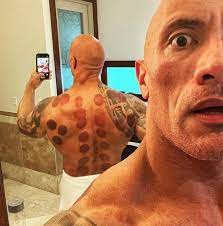- Chinese cupping is a method of breaking up the blockage to restore the body’s natural flow of energy.
- Cupping is a safe and non-invasive technique of deep tissue therapy that uses cups or jars which are made of bamboo, strong pyres glass or plastic.
- The opening of a cup is applied to the skin. The pressure in the cup is reduced by using heat or suction to generate negative pressure that can draw and hold skin and superficial muscles inside the cup, causing local congestion.
- Fire cupping – the practitioner ignites either the alcohol inside the cup or a cotton ball dipped in alcohol and holds a flame inside a glass cup, which temporarily expands the air from inside the cup. The heat source is then removed, and the cup is quickly overturned and applied to the client’s bare skin, most often on his back. The air in the cup rapidly depressurised as it cools the cup, which creates the seal. Usually, a few cups are applied in this way, allowed to sit for 10-15 mins, and then removed. In some cases, the area to be cupped may be covered in massage oil prior to placement of cups to ensure the cup can be slid up and down an area – this is also known as sliding cupping and is often used with musculoskeletal symptoms.
- Suction cupping – a valve at the top of the jar is operated by a small, attached pump so that the practitioner can depressurize the cup without the use of fire. This avoids some hazards and allows for greater control over the amount of suction.
Functions
- The depressurized cupping stimulates micro blood circulation to the local area by loosening muscles’ tension and sedating the nervous system, improving the flow of Qi and blood in the body, increasing local blood supply to the muscles and skin, helping activate the lymphatic system. Cupping is good for deep tissue repair by clearing blockages and bringing nourishment to the cells.
- Ancient physicians used the negative pressure cupping to suck blood and drain pus when treating sores and abscesses, and later it was expanded to be used in internal diseases such as tuberculosis, rheumatism, cold and flus, musculoskeletal problems, and neurological disorders.
- The negative pressure cupping can cause local tissue congestion that opens the channels letting the vital energy (Qi) flow freely throughout the body, promotes smooth meridians that can allow toxins to be carried away through the veins and removes any stagnation in the meridians of the body.
- Cupping has the functions of relieving pain and swelling, dispelling cold, drying dampness, dispersing knots, and antipyretic.
Side effects
- Cupping will often cause raised reddish circular marks. The skin in the areas cupped may turn black if the condition is poor blood circulation of body system and joint pain caused from cold. The normal skin tone will be restored after a few hours or days.
We are very experienced in providing different styles of cupping in a relaxing and clean environment.
Styles of cupping
- Stationary cupping – cups are placed on the skin and left for a period of five to 15 minutes in one location. It is used to clear stagnation of blood, to facilitate the release of pathogenic factors, and to dispel internal heat. It is used in help back pain, shoulder joint and knee joints pain.
- Gliding cupping – cups are moving along on the broad area of the body. The negative pressure cupping is used to help drain excess fluids and toxins; stimulate the peripheral nervous system, bring blood flow to stagnant muscles and skin; help relaxes tight muscle tissue and releases pain; loosen adhesions, lift connective tissue and stubborn knots in soft tissue.
- Quick cupping,
- Shaking cupping
- Lifting cupping.
How Does It Work?
One form of cupping includes “bloodletting” where a pricking needle is used on a vein before the cup is applied over the site. Usually, 3-4 drops of blood are drawn to promote blood circulation, remove stasis and alleviate swelling and pain. Some bruising along the site of the rim of the cup is expected.
The cupping Therapy is not suitable to used every one, it will be used in individual depending their body condition and should be consulted with practitioner for assessment.
Other modalities with cupping
- Bleeding by lancets + cupping or called Hijama is a popular method of cupping in both Muslim medicine and east Asian medicine. Because we are dealing with blood and body fluids we have to take some additional steps to ensure compliance with the infection control guideline under AHPRA. We use singles-use sterile cups, single use, sterile lancets for puncturing the skin, sterilise the area prior to applying the cups and of course we wear gloves to protect you and us. We ask that you trim any body hair on the areas where the cups are to be applied.
“Where there’s stagnation, there will be pain. Remove the stagnation, and you remove the pain.”
The old Chinese saying holds that pain results from the congestion, stagnation, and blockage of Qi, or vital energy, vital fluids, lymph, phlegm, and blood. If pain is the essence of disease, then suffering is a result of obstructed or irregular flow in the body.
What to expect
Cupping is much like the reverse of massage – rather than applying pressure to muscles, it uses gentle pressure to pull them upward. For most patients, this is a particularly relaxing and relieving sensation. Once the suction has occurred, the cups are either left directly on the skin for 15 minutes or can be gently moved across the skin (often referred to as gliding, sliding or mobile cupping). The suction in the cups causes the skin and superficial muscle layer to be lightly drawn into the cup.

